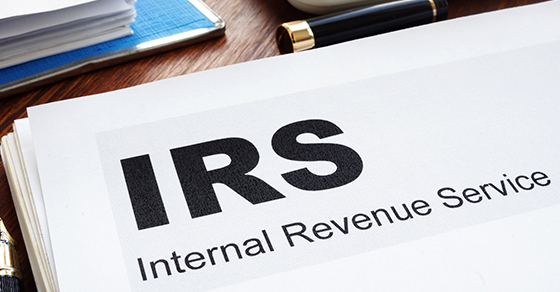
IRS Expands Mandatory e-Filing of Information Returns
On February 23, 2023, the Internal Revenue Service released final regulations that lowered the electronic filing threshold for certain information returns from 250 returns to 10 returns. This requirement applies to filings for calendar year 2023 and beyond, i.e., forms that are filed starting in 2024. This regulation includes the total for all aggregated forms filed.
For example, if a company has five employees (W-2s) and five independent contractors (1099-NEC), it must file all returns electronically because it has 10 returns in total.
The regulations affect persons required to file partnership returns, corporate income tax returns, unrelated business income tax returns, withholding tax returns, certain information returns, registration statements, disclosure statements, notifications, actuarial reports, and certain excise tax returns. The final regulations reflect changes made by the Taxpayer First Act (TFA) and are consistent with the TFA’s emphasis on increasing electronic filing.
- The e-file threshold no longer applies per form type, but filers with a combined total of 10 or more information returns must file all information returns electronically. (Corrections do not count when totaling the number of forms to file.)
The following information return forms must be added together for this purpose: Form 1042-S, the Form 1094 series, Form 1095-B, Form 1095-C, Form 1097-BTC, Form 1098, Form 1098-C, Form 1098-E, Form 1098-Q, Form 1098-T, the Form 1099 series, Form 3921, Form 3922, the Form 5498 series, Form 8027, and Form W-2G.
- Partnerships with more than 100 partners must file information returns electronically regardless of the number of information returns to be filed.
- Corrections must be filed in the same format as the original: e-filed or paper filed.
Key applicability dates
Some of the key applicability dates for electronic filing are as follows.
- Form 1120 – must be filed during calendar years beginning after December 31, 2023.
- Form 1065 – must be filed during calendar years beginning after December 31, 2023.
- Forms 1099 series, Form W-2, Form 1095-B, and Form 1095-C – must be filed during calendar years beginning after December 31, 2023 (e.g., 2023 returns required to be filed in 2024).
- Form 990 – must be filed for tax years ending on or after February 23, 2023.
- Form 990-T – must be filed during calendar years beginning after February 23, 2023.
- Forms 1042 and 1042-S by other than financial institutions – must be filed for tax years ending on or after December 31, 2023.
- Form 8300 – must be filed during calendar years beginning after December 31, 2023, if a taxpayer is otherwise required to e-file other forms covered by the regulations.
The regulations vastly expand the electronic filing requirement, eliminating paper filings for all but the smallest employers. Those who have been filing on paper now need to move forward with their transition to electronic filing, paying close attention to the aggregation rules and effective dates.
To help with this process, the IRS created a new, free online portal to help businesses file Form 1099 series information returns electronically. Known as the Information Returns Intake System (IRIS), this free electronic filing service is secure and accurate and requires no special software. Though available to any business of any size, IRIS may be especially helpful to any small business that sends their 1099 forms on paper to the IRS.
For more information, refer to the IRS’s E-file Forms 1099 with IRIS. Users must sign up for a Transmitter Control Code (TCC).
The final regulations provide hardship waivers for filers who would experience hardship in complying with the e-filing requirements and administrative exemptions from the e-filing requirements.
Please contact your Yeo & Yeo tax professional if you need assistance with preparing e-file 1099s and W-2s.